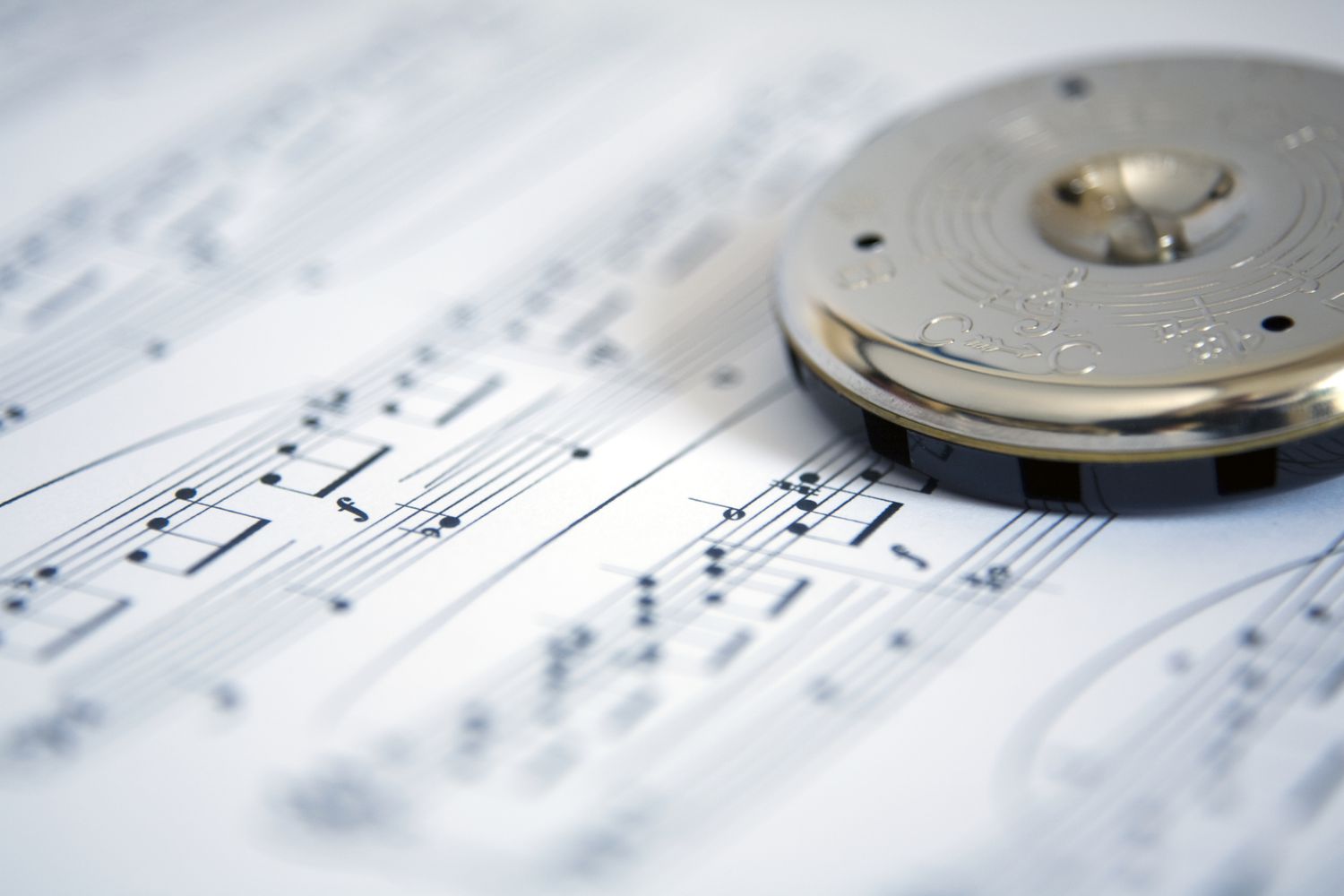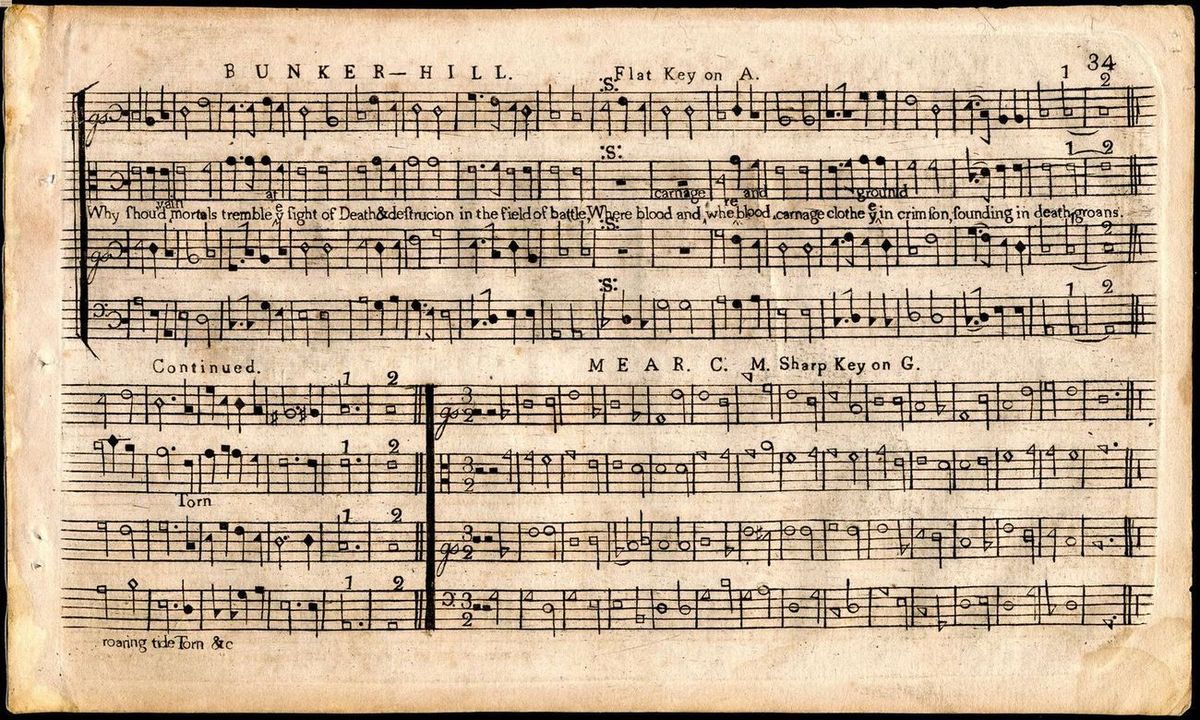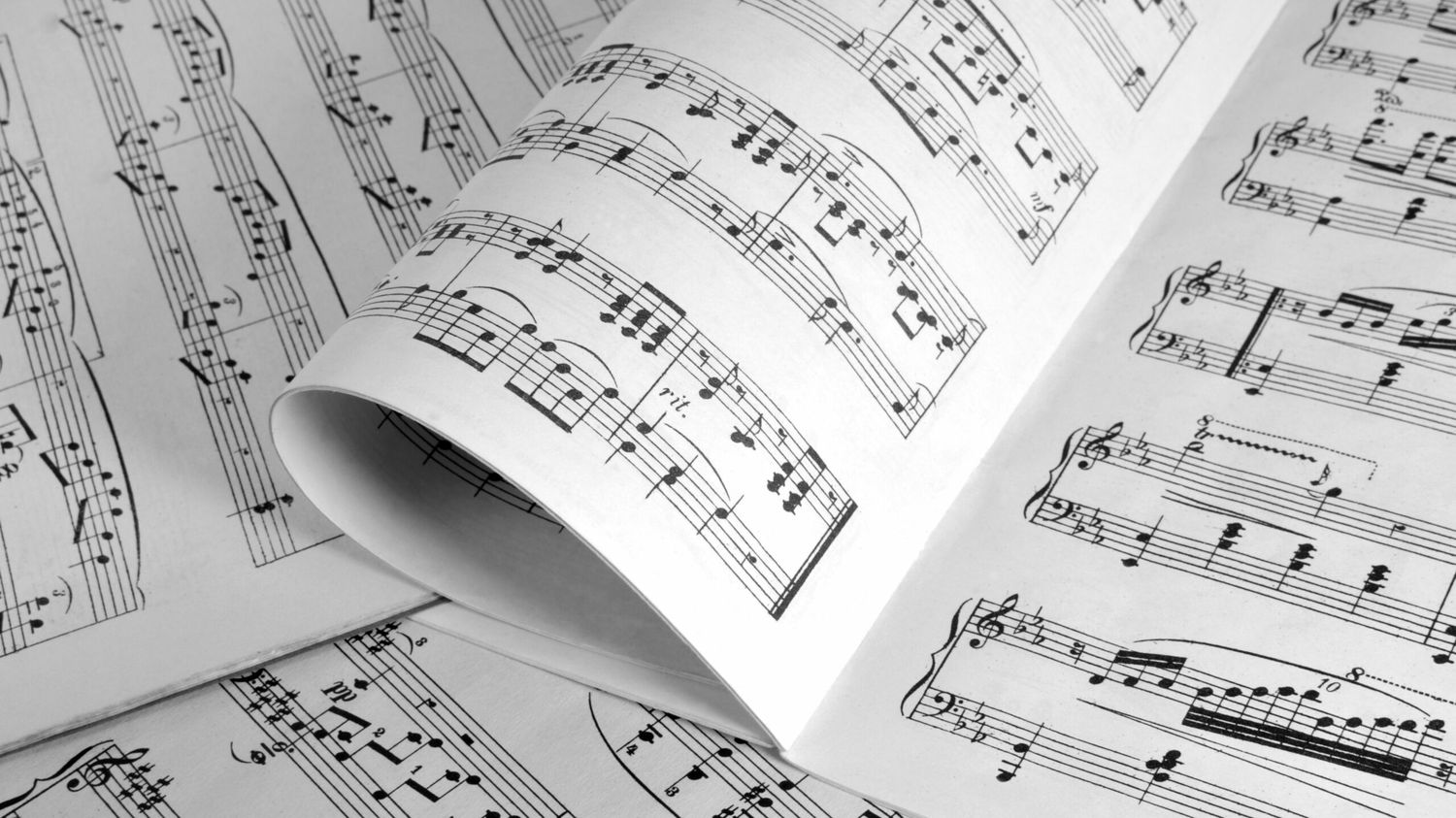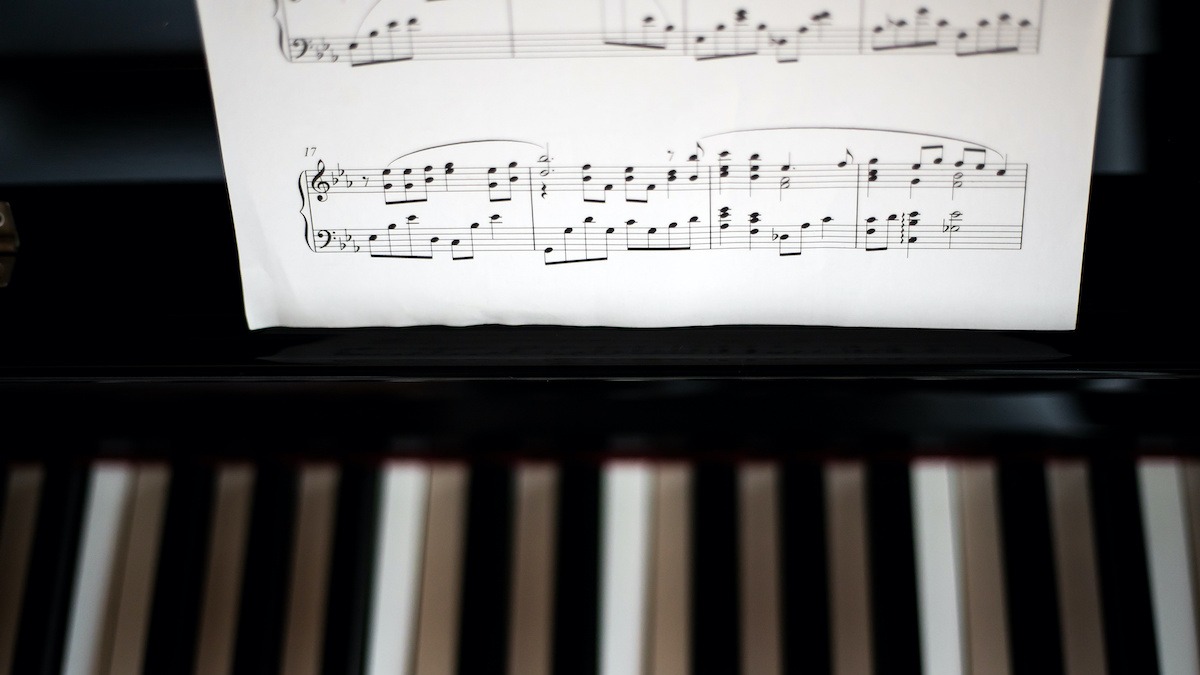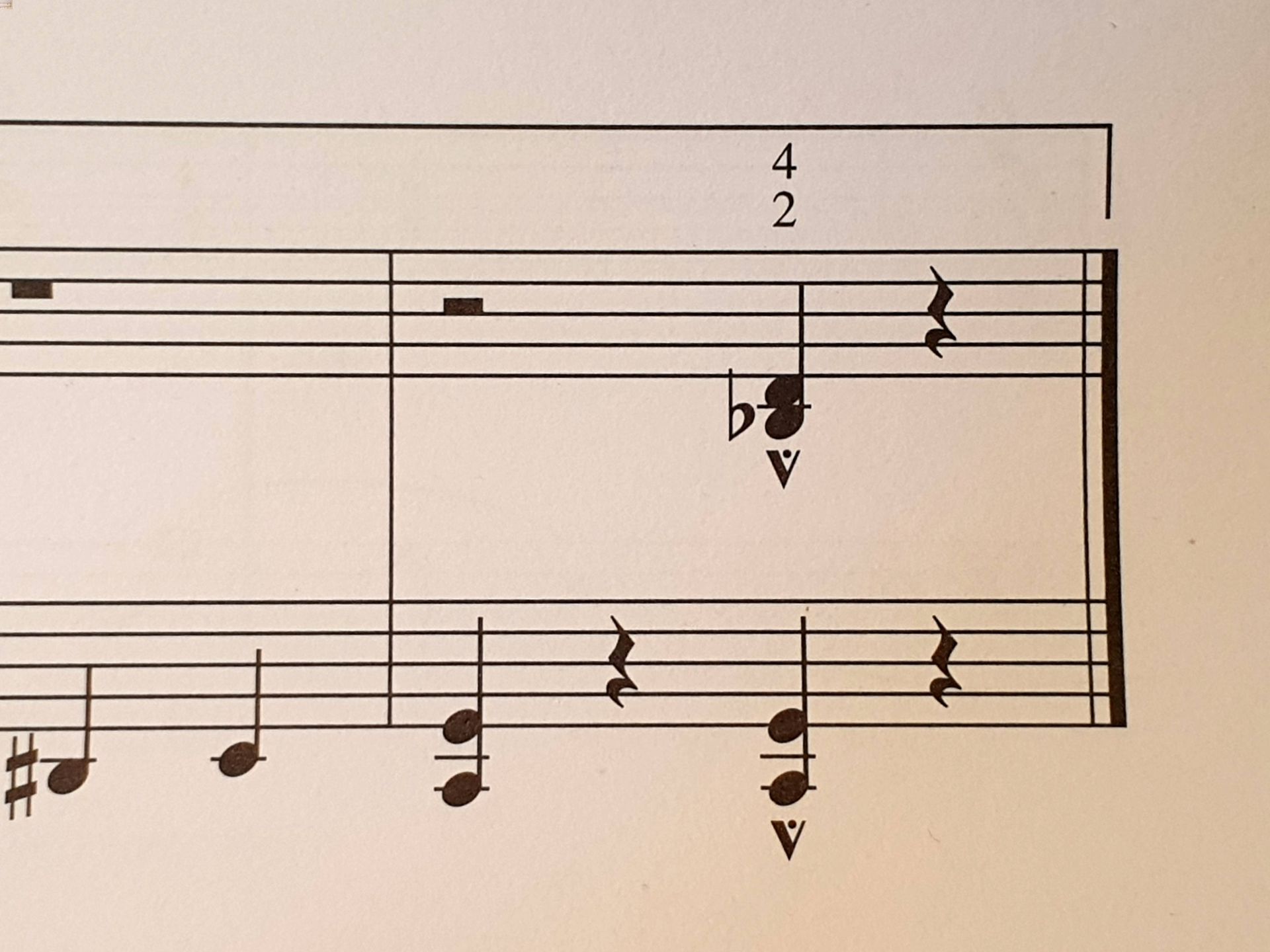Home>Events & Info>Note>What Is A Music Note
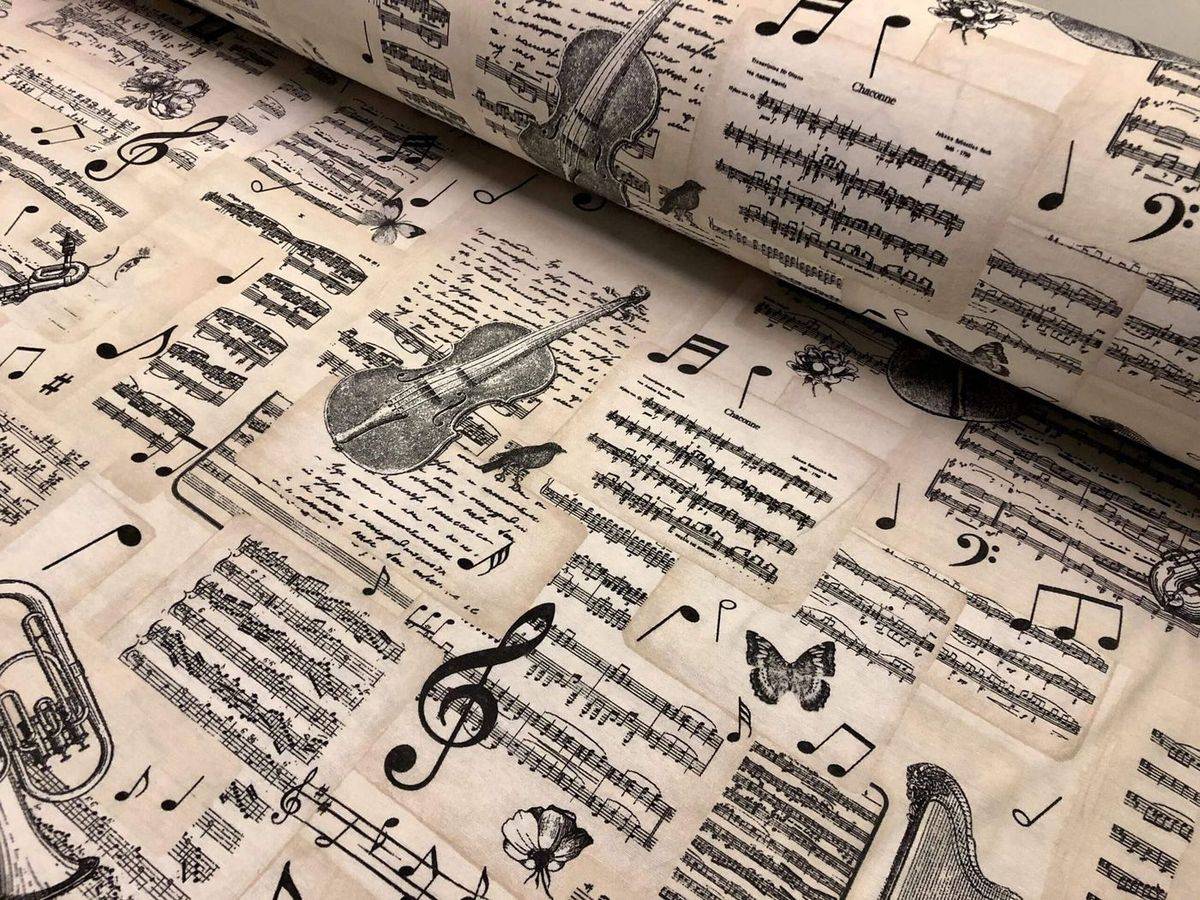

Note
What Is A Music Note
Modified: January 27, 2024
Discover the meaning and significance of a music note in this comprehensive guide. Learn about different types of notes and their role in creating melodies.
(Many of the links in this article redirect to a specific reviewed product. Your purchase of these products through affiliate links helps to generate commission for AudioLover.com, at no extra cost. Learn more)
Table of Contents
Introduction
Music is a universal language that has the power to stir emotions, tell stories, and bring people together. At the heart of every musical composition is the music note – the building block of melody and harmony. Whether you’re a musician or a curious listener, understanding what a music note is and how it functions is essential to grasping the intricacies of music.
In its simplest form, a music note is a symbol that represents a specific sound or pitch. Each note can vary in duration, intensity, and articulation, contributing to the overall expression and interpretation of a musical piece. Notes are organized and written on a staff, a set of horizontal lines and spaces that form the framework for musical notation.
Mastering the concept of music notes opens up a world of possibilities for musicians. It allows them to read and interpret sheet music, compose their own melodies, and communicate musical ideas with other musicians. For listeners, understanding music notes helps deepen their appreciation and enjoyment of music, as they can identify and appreciate the individual elements that make up a piece.
In this article, we will explore the components of a music note, the different notation systems used to represent them, and the role they play in creating music. Whether you’re a beginner just starting to learn about music or an experienced musician looking to delve deeper into the subject, this article will provide you with a comprehensive understanding of what music notes are and how they contribute to the world of music.
Definition of Music Note
A music note can be defined as a symbol that represents a specific sound or pitch in the musical language. Just as the letters of the alphabet form words and sentences, music notes are the fundamental building blocks of melodies, harmonies, and musical compositions.
Each music note is assigned a name and a specific position on the musical staff, which consists of horizontal lines and spaces. These lines and spaces represent different pitches, allowing musicians to accurately read and interpret the melodic and harmonic elements of a piece of music.
Music notes are named after the first seven letters of the alphabet: A, B, C, D, E, F, and G. In Western music, the pitch range is divided into octaves, and each note within an octave is assigned a specific letter name. The distance between two notes of the same letter name is known as an interval, and it determines the pitch difference between the two sounds.
The pitch of a music note is determined by the frequency of the sound wave it produces. Higher frequencies create higher-pitched notes, while lower frequencies produce lower-pitched notes. By assigning specific letter names to these pitches, musicians can communicate and reproduce musical sounds with precision and accuracy.
It’s important to note that there are variations in the naming systems and symbols used for music notes in different cultures and musical traditions. However, the basic concept remains the same – a music note is a symbol that represents a specific pitch or sound within the musical context.
Understanding the defining characteristics and functions of music notes is crucial for musicians, as it allows them to read and interpret sheet music, understand musical notation, and perform various musical compositions. For listeners, recognizing and identifying different music notes can enhance their listening experience and appreciation of the music they engage with.
Components of a Music Note
A music note consists of several key components that contribute to its overall characteristics and interpretation. These components include pitch, duration, and articulation.
Pitch: Pitch refers to the perceived frequency of a sound and is one of the most essential elements of a music note. It determines whether a note is high or low in the musical scale. The pitch of a note is represented by its position on the musical staff. Higher notes are placed higher on the staff, while lower notes are positioned lower. The pitch of a note can also be altered using accidentals, which are symbols that indicate a temporary change in pitch.
Duration: Duration refers to the length of time that a music note is played. It symbolizes the note’s rhythmic value and determines its duration within a musical phrase. Duration is represented by the shape of the note and the presence of additional symbols, such as dots or flags. A whole note, for example, has a longer duration than a quarter note. By combining notes of different durations, musicians create a rhythmic structure that adds complexity and variety to a musical composition.
Articulation: Articulation refers to the way in which a note is performed or played. It encompasses various techniques that affect the attack, duration, or release of a note. Common articulation markings include staccato (short and detached), legato (smooth and connected), and accent (emphasized or played with intensity). Articulation markings provide musicians with instructions on how to express and shape the musical phrases, adding expressiveness and nuance to a performance.
These components work together to give each music note its unique identity and contribute to the overall musical expression. By understanding and manipulating these components, musicians can bring life and emotion to their performances, effectively conveying the intentions of the composer.
It’s worth mentioning that while pitch, duration, and articulation are fundamental components of a music note, there are additional elements, such as dynamics (volume), tempo (speed), and ornamentation (decorative embellishments), that further shape and define the musical expression. Mastering these components and their interplay allows musicians to truly bring a piece of music to life.
Pitch
Pitch is a fundamental element of music that refers to the perceived frequency of a sound. It determines whether a music note sounds high or low. Pitch is an essential component that allows musicians to create melodies, harmonies, and chords, and it plays a crucial role in conveying the emotions and moods of a musical composition.
In Western music notation, pitch is represented on a musical staff, which consists of horizontal lines and spaces. Each line and space corresponds to a specific pitch. The higher the note is placed on the staff, the higher the pitch, and vice versa. The arrangement of notes on the staff allows musicians to read and interpret the melodic and harmonic elements of a musical piece.
Notes are named using the first seven letters of the alphabet: A, B, C, D, E, F, and G. These letter names serve as reference points for the different pitches within an octave. An octave is the interval between two pitches where the higher pitch has a frequency exactly twice that of the lower pitch.
To expand the range of pitches, additional symbols such as accidentals are used. Accidentals, such as sharps (#) and flats (♭), either raise or lower the pitch of a note by a semitone. A semitone is the smallest interval used in Western music, and it divides an octave into 12 equal parts.
Furthermore, the distance between two pitches is known as an interval. Intervals are measured by the number of steps between the two notes. For example, the interval between C and E is called a major third, while the interval between C and F is called a perfect fourth. Understanding intervals is crucial for building chords, scales, and harmonies in music.
Pitch can also be affected by various factors, such as instruments, vocal range, and musical styles. Instruments like the piano and guitar have the ability to produce a wide range of pitches, while vocalists can showcase their unique vocal range and timbre. Different musical styles utilize different pitch systems, such as microtonal music, which incorporates pitches that fall between the standard Western 12-tone system.
Overall, pitch forms the foundation of music and allows for the creation of melodies, harmonies, and chords. It is through pitch that musicians can express their creativity, evoke emotions, and engage listeners in the beautiful world of music.
Duration
Duration is a crucial component of music that refers to the length of time a music note is played or held. It plays a vital role in creating rhythm, establishing timing, and shaping the overall structure of a musical piece.
In musical notation, duration is represented by the shape and symbols used for each note. The most common durations include whole notes, half notes, quarter notes, eighth notes, and sixteenth notes. A whole note, for example, has the longest duration, while sixteenth notes have the shortest duration. Each note value represents a fraction of the whole measure, with the time signature providing information on how many beats are in each measure.
Rests, which are silence indicators in music, also have corresponding durations. Rests are used to denote periods of silence or breaks in between notes. Similar to note durations, rests come in various values, including whole rest, half rest, quarter rest, and so on.
Dotting a note is another technique used to alter its duration. When a dot is placed after a note, it increases its duration by half. For example, a dotted half note is equivalent to a half note plus a quarter note. This allows composers and musicians to create rhythmic patterns that vary in length and add complexity to the music.
Syncopation is another important aspect of duration in music. It refers to an emphasis placed on weak beats or offbeats, creating a sense of rhythmic tension and adding interest to the music. Syncopation can be achieved through various techniques, such as accents, tied notes, or using rests strategically.
Additionally, the tempo of a song affects the perceived duration of notes. Tempo refers to the speed at which music is played and can vary from very slow (adagio) to very fast (presto). A fast tempo typically results in shorter note durations, while a slower tempo allows for longer note durations. The combination of tempo and note durations determines the overall pacing and feel of a musical composition.
Understanding and manipulating duration is essential for musicians to accurately interpret and perform music. It allows them to establish a rhythmic framework, synchronize with other performers, and convey the intended mood and expression of a musical composition. Moreover, it adds depth, variation, and complexity to the musical experience, making it more engaging and enjoyable for listeners.
Articulation
Articulation in music refers to the way a music note is performed or played. It involves various techniques and markings that shape the attack, duration, or release of a note, adding expressiveness and nuance to a musical performance.
One of the most common articulation markings is the staccato, indicated by a dot placed above or below a note. Staccato notes are played with a short and detached sound, creating a crisp and distinct effect. This technique is achieved by releasing the note slightly earlier than its written duration.
In contrast, legato markings instruct musicians to play notes smoothly and connected. Legato notes flow seamlessly from one to the next, without any breaks or interruptions. This technique is accomplished by linking the notes together with a smooth and graceful transition.
Another articulation marking is the accent, denoted by a sideways V placed above or below a note. An accented note is played with emphasis, making it stand out in the musical phrase. Accents add intensity and highlight specific beats or notes within a composition.
Additional articulation markings include tenuto, which instructs musicians to hold a note for its full duration without emphasizing it, and staccatissimo, which indicates an even shorter and more detached attack than staccato. These markings, along with others such as marcato, spiccato, and fermata, provide specific instructions for how to perform the notes to achieve the desired musical effect.
In addition to these markings, musicians also use techniques like tremolo, trills, and glissandos to further enhance the expressive possibilities of a note or a series of notes. These techniques create unique sounds and textures, adding depth and character to the music.
Articulation is not limited to instrumental music alone; vocalists also use articulation techniques to shape the delivery of lyrics and add expression to their performance. Proper pronunciation, diction, and phrasing all contribute to the overall articulation and interpretation of a song.
Mastering articulation is crucial for musicians as it allows them to convey the intended mood, character, and emotion of a musical piece. It adds personality and subtleties to the performance, making it more engaging and captivating for the listeners. By understanding and incorporating various articulation techniques, musicians can bring life to the notes on the page and create a truly memorable musical experience.
Notation Systems
Notation systems are methods of representing music visually through a system of symbols and markings. They provide a standardized way for musicians to read, write, and communicate musical ideas. Two of the most widely used notation systems are staff notation and solfege notation.
Staff Notation: Staff notation, also known as Western notation, is the most common system used in Western classical music and many other genres. It is based on a set of horizontal lines and spaces, called a staff, where notes are placed to represent pitch and rhythm. Each line and space on the staff represents a specific pitch, and the position of the note on the staff determines its pitch value.
The staff consists of five lines and four spaces, with additional ledger lines added above and below when necessary. Notes are written on the lines and spaces of the staff, and their shape and additional symbols indicate their duration, dynamics, and other musical elements. This system allows musicians to accurately read and interpret sheet music, enabling them to perform compositions written by different composers with precision.
Solfege Notation: Solfege notation, also known as the solfège system, is a music education method that uses syllables to represent the different pitches of a musical scale. It is commonly associated with the syllables “do, re, mi, fa, sol, la, ti” and their variations, such as “solfege” or “solmization.”
The solfege system provides a way to identify and internalize the relationships between pitches and intervals. It is often used in vocal training and sight-singing, as it helps singers understand the melodic structure of a piece and sing accurately. By associating specific syllables with each pitch, musicians can easily navigate and visualize the notes within a musical composition.
While staff notation and solfege notation are the most well-known systems, there are other notation systems used in different cultures and musical traditions around the world. For example, Indian classical music uses a notation system called “sargam,” which is based on a series of Indian solfege syllables.
Notation systems play a vital role in preserving and transmitting musical compositions from one generation to another. They enable musicians to learn new pieces, compose their own music, and communicate musical ideas effectively. Whether using staff notation, solfege notation, or other systems, understanding and fluently reading notation allows musicians to participate in the rich and diverse world of music.
Staff Notation
Staff notation, also known as Western notation, is the most widely used system for representing music. It provides a standardized way to visually represent musical sounds through a system of symbols and markings. Staff notation is primarily used in Western classical music, but it is also prevalent in various other genres and styles.
The foundation of staff notation is the staff, which consists of five horizontal lines and four spaces. The lines and spaces represent different pitches, and the arrangement of notes on the staff indicates their respective pitch values. Each line and space is assigned a letter name, starting from bottom to top, with the lines typically representing E, G, B, D, and F, and the spaces representing F, A, C, and E.
Notes in staff notation are represented by oval-shaped symbols placed on the lines and spaces of the staff. The position of the note on the staff indicates its pitch. Higher notes are positioned higher on the staff, whereas lower notes are positioned lower. The specific duration of the note is represented by the shape of the note: whole notes, half notes, quarter notes, eighth notes, and so on. Additional symbols, such as dots and flags, can modify the duration of a note.
In addition to pitch and duration, staff notation also incorporates various symbols and markings to indicate dynamics, tempo, articulation, and more. Symbols like sharps (#) and flats (♭) are used to indicate alterations in pitch, while accents, staccato dots, and legato lines denote specific articulation techniques.
The ability to read and interpret staff notation is a valuable skill for musicians. It allows them to accurately perform compositions written by different composers, understand the structure and melody of a piece, and effectively communicate musical ideas with other musicians. Staff notation provides a universal language that transcends cultural and language barriers, enabling music to be shared and understood worldwide.
While staff notation can appear complex at first, with practice and study, musicians can become proficient in reading and understanding its intricacies. It opens the door to a vast repertoire of music and provides a framework for musicians to express themselves and bring a composer’s vision to life.
Solfege Notation
Solfege notation, also known as the solfège system, is a method of musical notation that uses syllables to represent different pitches in a musical scale. It is commonly associated with the syllables “do, re, mi, fa, sol, la, ti” and their variations, such as “solfege” or “solmization.”
The solfege system provides a valuable tool for singers and musicians to internalize the relationships between pitches and intervals. It enables them to navigate and understand the melodic structure of a piece, aiding in sight-singing, ear training, and vocal training.
Each syllable in solfege notation corresponds to a specific pitch. The syllables are based on the major scale, with “do” representing the tonic or the starting pitch. From there, each succeeding syllable represents the subsequent pitches in the scale. For example, “re” represents the second note of the scale, “mi” represents the third note, and so on.
The solfege system helps musicians develop relative pitch awareness, allowing them to recognize and recreate the intervallic relationships between notes. It assists in improving vocal technique and accuracy by helping singers mentally internalize the pitch before producing it vocally. Solfege can be used as a guide for practicing scales, intervals, and melodies, facilitating a deeper understanding of the musical structure.
In addition to the standard major scale syllables, solfege notation also employs other variations and alterations. For instance, “do” can be lowered by a half step to “di” or raised by a half step to “ra,” depending on the specific context of the musical composition. These alterations allow for greater flexibility and accuracy in representing the chromatic and diatonic tones of a scale.
The solfege system is widely used in music education and vocal training. It provides a practical and accessible means for teaching and learning music, especially in the context of choral and vocal music. By internalizing solfege syllables, musicians can develop a strong foundation in pitch recognition, ear training, and music theory, enabling more confident and accurate performances.
While solfege notation is most commonly associated with vocal music, it can also be applied to instrumental music. Instrumentalists can utilize solfege syllables as a mental framework to navigate scales, intervals, and melodic patterns on their instruments, enhancing their overall musicianship and musical understanding.
Overall, solfege notation offers a valuable system for musicians to develop pitch recognition, improve vocal skills, and deepen their understanding of melody and harmony. It is a versatile and widely adopted method that enriches music education, performance, and appreciation.
Key Signatures and Accidentals
In music, key signatures and accidentals are essential elements that affect the pitch of notes within a composition. They play a crucial role in establishing the tonality and overall harmonic structure of a piece.
Key Signatures: Key signatures are a set of sharps or flats placed at the beginning of a staff, right after the clef symbol. They indicate the tonal center, or key, of a musical composition. The key signature helps determine the arrangement of sharps or flats throughout the entire piece.
In major keys, the key signature specifies the arrangement of sharps or flats necessary to match the major scale starting from the tonic pitch. For example, a key signature with three sharps (F#, C#, and G#) represents the key of A major. In minor keys, the key signature represents the notes of the relative major scale starting from the sixth degree. For instance, the key of A minor has the same key signature as C major (no sharps or flats).
Accidentals: Accidentals are symbols placed before a note to temporarily raise or lower its pitch within a measure or musical phrase. The two most common accidentals are sharps (#) and flats (♭). A sharp raises a note by a half step, while a flat lowers it by a half step. Accidentals can alter the pitch of a note within a measure or throughout an entire piece, depending on the presence of key signatures.
When an accidental is placed on a note, it affects all subsequent occurrences of the same note within the same measure, unless specifically canceled by another accidental or the natural sign (♮). For example, if a sharp is placed on a note, all subsequent occurrences of the same note in that measure are also sharpened.
In addition to sharps and flats, there are also double sharps (x) and double flats (♭♭), which respectively raise or lower a note by two half steps. These accidentals are used to indicate pitches that are already sharpened or flattened and need further alteration.
Key signatures and accidentals allow composers and musicians to create music that explores different tonalities and modulations. They provide a framework for manipulating the pitch and establishing harmony within a composition. Additionally, they aid in sight-reading and understanding the relationship between notes, enabling musicians to perform accurately and confidently.
Understanding key signatures and accidentals is crucial for musicians as it allows them to navigate and interpret sheet music effectively. Furthermore, it provides insight into the harmonic structure of a piece, enabling musicians to analyze and appreciate the compositional choices made by the composer.
Conclusion
Music notes are the foundation of melody and harmony, allowing musicians to express their creativity and evoke emotions. Understanding what music notes are and how they function is essential for both musicians and listeners alike. Through the components of pitch, duration, and articulation, music notes come to life and contribute to the creation of beautiful music.
Pitch is the fundamental element that determines whether a note is high or low and is represented through symbols on the musical staff. Duration gives notes their rhythmic value and is represented by the shape and additional symbols associated with each note. Articulation adds expressiveness and nuance by shaping the attack, duration, or release of a note, allowing musicians to effectively communicate their musical ideas.
Two important notation systems, staff notation and solfege notation, provide a visual representation of music notes. Staff notation, with its lines and spaces, allows musicians to read and interpret sheet music accurately, while solfege notation provides a system of syllables for understanding and internalizing the relationships between pitches.
Key signatures and accidentals play a significant role in music, establishing the tonal center of a composition and adjusting the pitch of notes. Understanding these elements helps musicians navigate the harmonies and modulations within a musical piece.
By delving into the world of music notes and exploring their components and notation systems, musicians gain the tools to communicate, interpret, and perform music with precision and expressiveness. For listeners, a deeper understanding of music notes enhances their appreciation and enjoyment of the intricate melodies and harmonies that make up their favorite songs.
So whether you’re a professional musician or a passionate listener, the knowledge of music notes allows you to connect more deeply with the music around you. It unlocks a world of creativity, emotion, and human expression that transcends language and culture. So let the music notes guide you on a journey of discovery and enjoyment as you explore the vast and beautiful realm of music.


